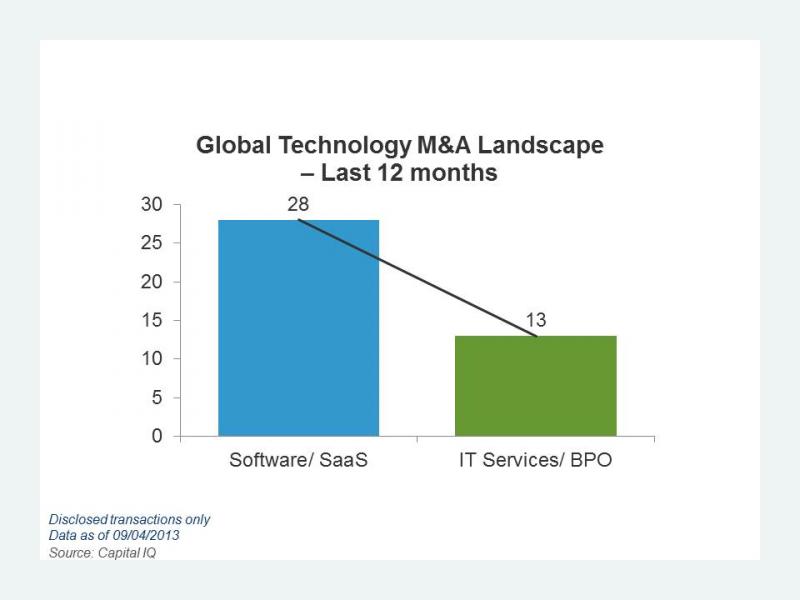Indian CIOs Must Prepare To Take Advantage Of Global Technology M&A Trends
Over the past 12 months, we have witnessed the acquisition of 28 software or software-as-a-service (SaaS) firms globally, compared with only 13 IT services or BPO firms (see the figure below). The Forrsights Budgets and Priorities Survey, Q4 2012 indicated that 67% of business decision-makers in India planned to increase their department’s spending on SaaS and other as-a-service offerings in 2013 through the IT organization. Anticipating the market’s growing shift to the cloud, large enterprise software players like Oracle and SAP are acquiring SaaS-based products and solutions (Taleo, Ariba, SuccessFactors, etc.) to help them shift their business model to meet the growing market preference for SaaS subscription software over traditional licensed software products.

CIOs in India must capitalize on this gradual global shift in M&A — away from pure IT services and toward cloud-based services — in order to fundamentally shift the way IT is delivered in their organizations. CIOs should adopt a three-pronged strategy to gain full advantage of global technology M&A trends:
- Build a focused SaaS strategy to handle heavy sales pressure from large enterprise software vendors. Forrester has recently published two reports that analyze how SAP and Oracle are trying to use SaaS to transform their business model. As enterprise software vendors get more aggressive in their SaaS strategy, CIOs should expect heavy sales pressure to adopt their SaaS solutions. CIOs should prepare for this pressure by investing time to assess the value of SaaS offerings of their software vendors and consider moving business functions (HR, procurement, sales, finance, travel, etc.) to SaaS to leverage vendor-managed software updates and infrastructure services. Forrester’s Forrsights Budgets and Priorities Tracker Survey, Q4 2012 found that 45% of organizations in India have either hired or plan to hire consultants to help with the integration/deployment/migration strategy of SaaS offerings.
- Revisit your existing IT service provider relationship. Forrester’s earlier research showed that today’s requirements from firms are fluid, ambiguous, and concerned with an objective — more like the mission given to an admiral than furniture assembly instructions. The sustainable competitive advantage for traditional IT services firms depends critically on assets and platforms that will deliver future revenue streams. However, many firms are not adept at conveying the value of their offerings, leaving clients unable to see the advantage of choosing a solution with more such embedded assets over one that is custom-built. Thus, it’s important for CIOs to take a fresh look at their relationships with their IT service providers in terms of the business outcome that those providers are delivering through assets and platforms.
- Adopt a showback approach to develop an IT-as-a-service model. Majority of Indian CIOs are heavily focused on uptime, on-time solution implementation type performance metrics and fewer than 10% of them currently follow a “showback” model to feed IT consumption information back to the business. CIOs should embrace the showback approach, starting with increased support for public cloud services, to begin evolving toward a well-managed IT-as-a-service model, while addressing change management related issues within
What are your views on the global technology M&A landscape and its impact on CIOs in India?